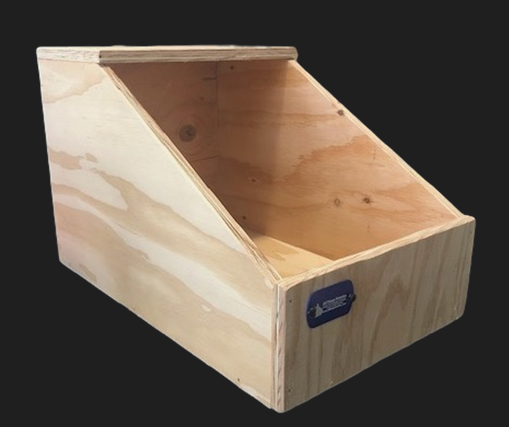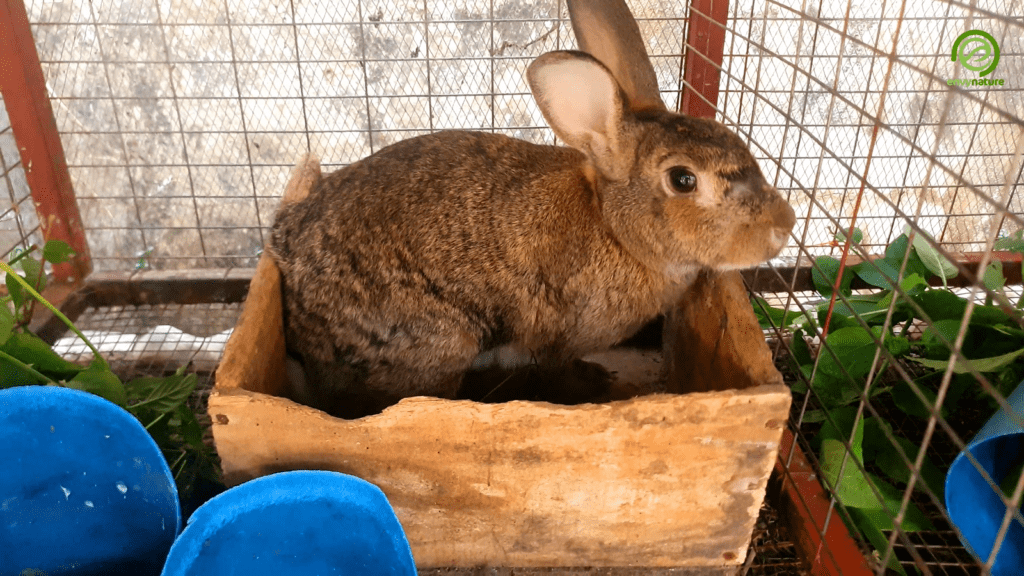The design, size, and dimensions of a rabbit nesting box are crucial to the success of the birth and the health of the newborn rabbits. However, selecting the right design, size, and dimensions for this birthing box can be a daunting task.
In this article, we’ll provide you with a comprehensive guide on how to decide on what design, size, and dimensions of a rabbit nesting box to choose.
Why is a Nesting Box Important?
Rabbit keeping is a rewarding and fulfilling experience, but it also comes with certain responsibilities, including providing a comfortable and safe living environment for your furry friend. One of the most critical components of this environment is a box to birth and breed rabbit babies called a rabbit nesting box.
This box is also called a birthing box and breeding box. A rabbit nesting box provides a safe and secure place for a rabbit to give birth and raise her young. The box protects the mother rabbit and her babies from predators and provides a comfortable place for the mother to nurse and care for her offspring.
Design of Rabbit Nesting Boxes
Rabbit nesting boxes come in various designs, including open-top, closed-top, and hutch-like designs. Each design serves a unique purpose, and it’s essential to choose the one that’s best suited for your rabbit’s breed, size, and personality.
Open-Top Design
An open-top design is suitable for most breeds of rabbits. This design allows easy access to the nest and the kits, which is crucial when it comes to cleaning and monitoring the health of the rabbits.

Closed-Top Design
A closed-top design is ideal for breeding rabbits, especially when you want to maintain temperature and humidity levels in the nest. It’s also useful for protecting newborn kits from potential predators such as rodents.
Hutch-Like Design
A hutch-like design is ideal for outdoor rabbits. It’s an excellent option for those who don’t have enough space indoors, as it provides your rabbit with a spacious living area. It’s also ideal for rabbits that are allowed to roam free during the day and need a safe and comfortable place to sleep at night.
Rabbit Nesting Box size and Dimensions
The size and dimension of the birthing or nesting box are essential factors to consider. The box should be large enough for the mother rabbit to move around freely, but not too big that the young rabbits get lost.
The nest should be big enough to contain the rabbit babies and mother while also being small enough to fit into the rabbit enclosure without taking so much room that it inhibits the mother’s movement.
A good size for a breeding and nesting box depends on the size of your rabbit specie and the size of the enclosure. The size must provide enough room for the mother rabbit to stretch out and turn around, but it also keeps the young rabbits close to the mother for warmth and nursing.
A standard rabbit nesting box should be at least 18 inches long, 12 inches wide, and 12 inches high. However, the size and dimensions may vary depending on your rabbit’s breed, size, and age.
The following are some general guidelines that you can follow to determine the size and dimensions of your rabbit nesting box:
Breed of Rabbit
Different breeds of rabbits have different space requirements. For instance, larger breeds such as the Flemish Giant and the Continental Giant require more space than smaller breeds such as the Netherland Dwarf and the Mini Lop.
Age of the Rabbit
Rabbits’ space requirements change as they grow older. Young rabbits need less space than mature rabbits. Therefore, you may need to adjust the size and dimensions of the nesting box as your rabbit grows.
How to Decide on the Design, Size, and Dimensions of Rabbit Nesting Box
When deciding on the design, size, and dimensions of your rabbit nesting box, consider the following factors:
- The breed, size, and age of your rabbit.
- The available space in your Rabbit enclosure.
- The intended purpose of the nesting box, whether it’s for breeding, nursing kits, or sleeping.
- Your budget.
Conclusion
Providing a safe and comfortable environment for your rabbit and her offspring is essential to ensuring their well-being.
The bottom of the nesting box should be comfortable for the mother rabbit to lie on. A soft material, such as straw or shredded paper, can be used to line the bottom of the box. This material should be changed regularly to keep the box clean and free of any bacteria or parasites that may harm the mother rabbit or her young.
Selecting the right design, size, and dimension of a rabbit nesting box is critical to your rabbit’s comfort and safety. Ensure that you choose a design that’s suitable for your rabbit’s breed, size, and age. Also, ensure that the nesting box is large enough to accommodate your rabbit comfortably and provide enough space to move around.
By following these guidelines, you’ll be able to provide your furry friend with a comfortable and safe living environment.
If you are interested in breeding rabbits, make sure to research and understand all the necessary steps to ensure a successful birth and healthy offspring.
